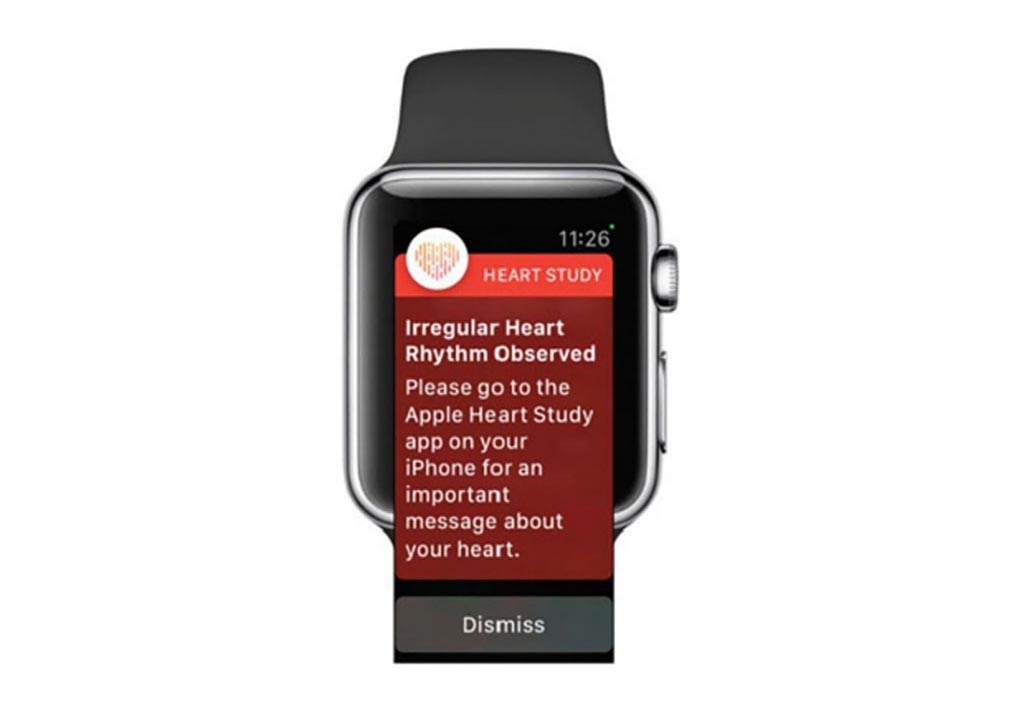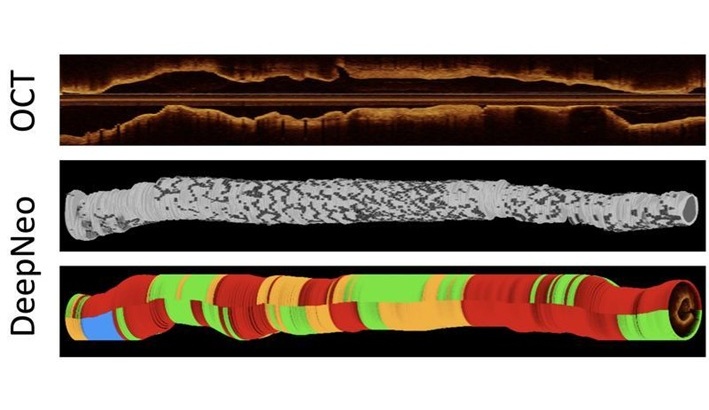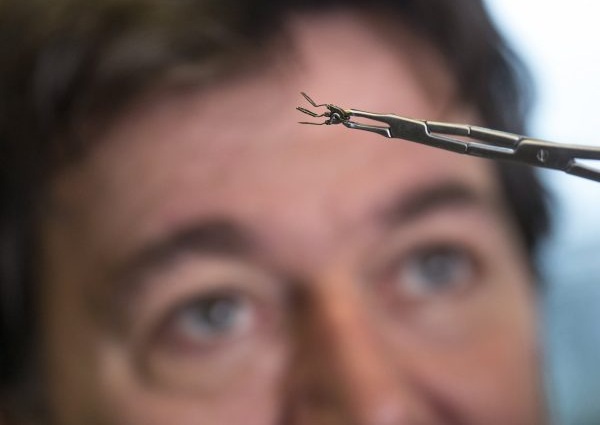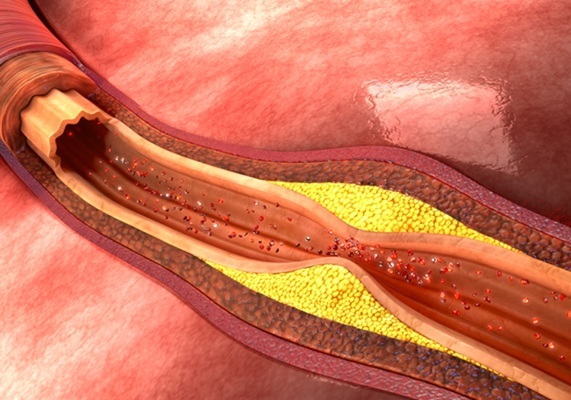Wearable Technology Can Identify Heart Arrhythmias
|
By HospiMedica International staff writers Posted on 15 Nov 2018 |

Image: The Apple Watch may soon detect AF and other arrhythmias (Photo courtesy of Stanford University).
A new study will evaluate the ability of a smartwatch-based pulse algorithm to identify atrial fibrillation (AF) and guide subsequent clinical evaluation.
Researchers at Stanford University School of Medicine (CA, USA), Apple (Cupertino, Ca, USA) and other institutions have recruited 419,093 participants to a prospective, single arm study with the goal of measuring the proportion of study participants with an irregular pulse detected by the Apple Watch. If a sufficient number of episodes are detected, participant will be asked to undergo ambulatory electrocardiogram (ECG) patch monitoring, which will record their heart rhythms for up to a week. Enrollment, which was conducted through an iPhone app, is now closed.
Each participant in the study is required to have an Apple Watch (series 1, 2, or 3) and an iPhone. An app on the phone intermittently checks the heart-rate pulse sensor for measurements of an irregular pulse. The study will determine the percentage of participants receiving irregular pulse notifications that have AF on ECG patch monitoring; determine how many of those who received an irregular pulse notification go on to get medical attention; and to determine the accuracy of irregular-pulse detection by the watch, compared with the simultaneous ECG patch recordings. The study was published on November 1, 2018, in the American Heart Journal.
“The study has entered the final phase of data collection and will be completed early next year,” said senior researcher cardiologist Mintu Turakhia, MD. “We now have access to high-quality sensors that can measure and detect changes in our bodies in entirely new and insightful ways without even needing to go to the doctor, but we need to rigorously evaluate them. There's never really been a study like this done before.”
The Apple Watch’s sensor uses green light emitting diode (LED) lights flashing hundreds of times per second and light-sensitive photodiodes to detect the amount of blood flowing through the wrist. Using a unique optical design, the sensor gathers data from four distinct points on the wrist. Powerful software algorithms isolate actual heart rhythm sounds from other noise.
Related Links:
Stanford University School of Medicine
Apple
Researchers at Stanford University School of Medicine (CA, USA), Apple (Cupertino, Ca, USA) and other institutions have recruited 419,093 participants to a prospective, single arm study with the goal of measuring the proportion of study participants with an irregular pulse detected by the Apple Watch. If a sufficient number of episodes are detected, participant will be asked to undergo ambulatory electrocardiogram (ECG) patch monitoring, which will record their heart rhythms for up to a week. Enrollment, which was conducted through an iPhone app, is now closed.
Each participant in the study is required to have an Apple Watch (series 1, 2, or 3) and an iPhone. An app on the phone intermittently checks the heart-rate pulse sensor for measurements of an irregular pulse. The study will determine the percentage of participants receiving irregular pulse notifications that have AF on ECG patch monitoring; determine how many of those who received an irregular pulse notification go on to get medical attention; and to determine the accuracy of irregular-pulse detection by the watch, compared with the simultaneous ECG patch recordings. The study was published on November 1, 2018, in the American Heart Journal.
“The study has entered the final phase of data collection and will be completed early next year,” said senior researcher cardiologist Mintu Turakhia, MD. “We now have access to high-quality sensors that can measure and detect changes in our bodies in entirely new and insightful ways without even needing to go to the doctor, but we need to rigorously evaluate them. There's never really been a study like this done before.”
The Apple Watch’s sensor uses green light emitting diode (LED) lights flashing hundreds of times per second and light-sensitive photodiodes to detect the amount of blood flowing through the wrist. Using a unique optical design, the sensor gathers data from four distinct points on the wrist. Powerful software algorithms isolate actual heart rhythm sounds from other noise.
Related Links:
Stanford University School of Medicine
Apple
Latest Health IT News
- Printable Molecule-Selective Nanoparticles Enable Mass Production of Wearable Biosensors
- Smartwatches Could Detect Congestive Heart Failure
- Versatile Smart Patch Combines Health Monitoring and Drug Delivery
- Machine Learning Model Improves Mortality Risk Prediction for Cardiac Surgery Patients
- Strategic Collaboration to Develop and Integrate Generative AI into Healthcare
- AI-Enabled Operating Rooms Solution Helps Hospitals Maximize Utilization and Unlock Capacity
- AI Predicts Pancreatic Cancer Three Years before Diagnosis from Patients’ Medical Records
- First Fully Autonomous Generative AI Personalized Medical Authorizations System Reduces Care Delay
- Electronic Health Records May Be Key to Improving Patient Care, Study Finds
- AI Trained for Specific Vocal Biomarkers Could Accurately Predict Coronary Artery Disease
Channels
Critical Care
view channel
AI Model Analyzes Patient Data to Diagnose Multiple Sclerosis With 90% Accuracy
Multiple sclerosis (MS) is a chronic inflammatory condition affecting the central nervous system. Most patients initially experience the relapsing-remitting form (RRMS), characterized by periods of symptom... Read more
Magnetically Navigable Microparticles Enable Targeted Drug Delivery
Abdominal aortic aneurysms (AAA) can be life-threatening if not treated and result in nearly 10,000 deaths annually. Researchers working to improve treatments for AAA could now make it possible for doctors... Read more
AI-Powered Algorithm Automates Analysis of Coronary Stents After Implantation
Every year, over three million people globally receive stents to open blocked blood vessels caused by heart disease. However, monitoring the healing process after stent implantation remains a significant challenge.... Read moreSurgical Techniques
view channel
DNA Origami Improves Imaging of Dense Pancreatic Tissue for Cancer Detection and Treatment
One of the challenges of fighting pancreatic cancer is finding ways to penetrate the organ’s dense tissue to define the margins between malignant and normal tissue. Now, a new study uses DNA origami structures... Read more
Pioneering Sutureless Coronary Bypass Technology to Eliminate Open-Chest Procedures
In patients with coronary artery disease, certain blood vessels may be narrowed or blocked, requiring a stent or a bypass (also known as diversion) to restore blood flow to the heart. Bypass surgeries... Read more
Intravascular Imaging for Guiding Stent Implantation Ensures Safer Stenting Procedures
Patients diagnosed with coronary artery disease, which is caused by plaque accumulation within the arteries leading to chest pain, shortness of breath, and potential heart attacks, frequently undergo percutaneous... Read more
World's First AI Surgical Guidance Platform Allows Surgeons to Measure Success in Real-Time
Surgeons have always faced challenges in measuring their progress toward surgical goals during procedures. Traditionally, obtaining measurements required stepping out of the sterile environment to perform... Read morePatient Care
view channel
Portable Biosensor Platform to Reduce Hospital-Acquired Infections
Approximately 4 million patients in the European Union acquire healthcare-associated infections (HAIs) or nosocomial infections each year, with around 37,000 deaths directly resulting from these infections,... Read moreFirst-Of-Its-Kind Portable Germicidal Light Technology Disinfects High-Touch Clinical Surfaces in Seconds
Reducing healthcare-acquired infections (HAIs) remains a pressing issue within global healthcare systems. In the United States alone, 1.7 million patients contract HAIs annually, leading to approximately... Read more
Surgical Capacity Optimization Solution Helps Hospitals Boost OR Utilization
An innovative solution has the capability to transform surgical capacity utilization by targeting the root cause of surgical block time inefficiencies. Fujitsu Limited’s (Tokyo, Japan) Surgical Capacity... Read more
Game-Changing Innovation in Surgical Instrument Sterilization Significantly Improves OR Throughput
A groundbreaking innovation enables hospitals to significantly improve instrument processing time and throughput in operating rooms (ORs) and sterile processing departments. Turbett Surgical, Inc.... Read moreBusiness
view channel
Expanded Collaboration to Transform OR Technology Through AI and Automation
The expansion of an existing collaboration between three leading companies aims to develop artificial intelligence (AI)-driven solutions for smart operating rooms with sophisticated monitoring and automation.... Read more














